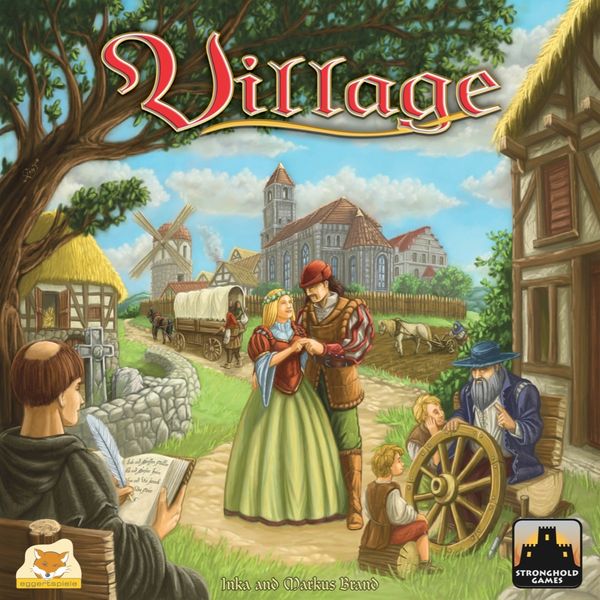Village (2011) Board Game
Village is a board game designed by Inka and Markus Brand and published by eggertspiele in in 2011. It is set in medieval times and focuses on players managing a small village and competing to earn the most prestige points.
Game Components of Village
How To Setup Village
To set up Village, each player starts with four family members of the first generation placed on their player mat. The game board is seeded with colored cubes and black cubes based on the number of players. Each zone on the board (market, travel, crafting, church, council house) is filled with these cubes. Players also receive their starting resources and goods. The Book of Honor and graveyard are prepared according to the rules, and each player sets their time tracker.
Gameplay Mechanics and Game Objective
Player Experience
Playing Village involves a delicate balance between short-term and long-term strategies. Players must adapt to the tempo of generations, ensuring they get the most benefit from each family member’s life. The game is not about direct competition but rather about managing resources and time efficiently. The theme, while morbidly comic, adds a unique layer of depth, as players must consider the mortality of their family members to achieve points.
Pros
Cons
Personal Thoughts on Village
Village is ideal for players who enjoy strategic planning, resource management, and thematic depth. It is not a game for those looking for simple, straightforward mechanics or those who are sensitive to themes involving mortality. The game requires a balance of short-term and long-term thinking, making it appealing to players who enjoy complex, layered gameplay. Despite its weight, the game’s mechanics flow smoothly once understood, offering a rich and rewarding experience for those who invest the time to learn it.
We are supported by our audience. When you purchase through links on our site, we may earn an affiliate commission, at no extra cost for you. Learn more.

